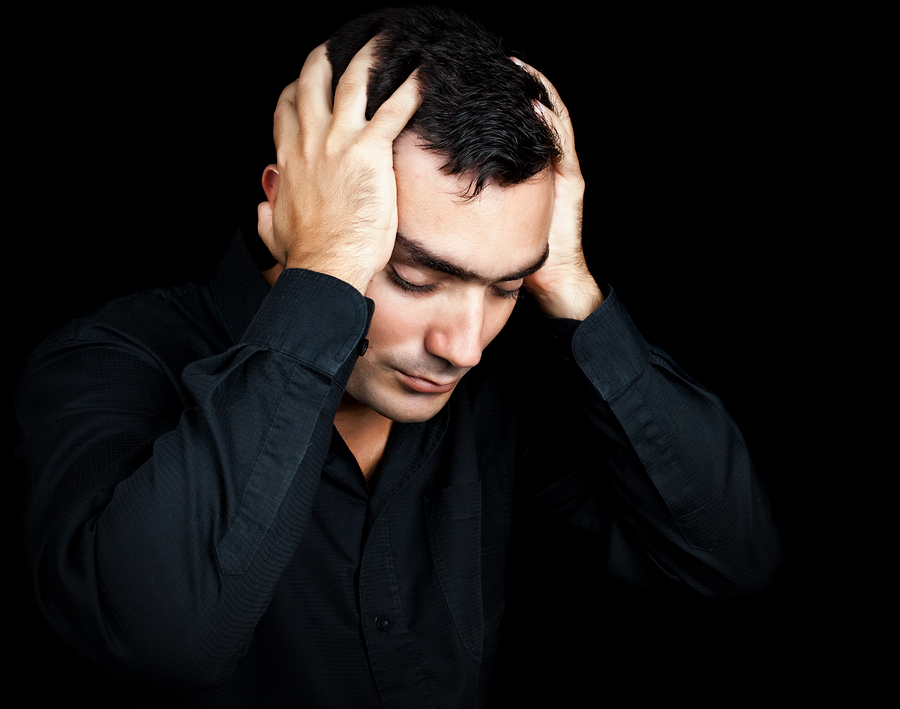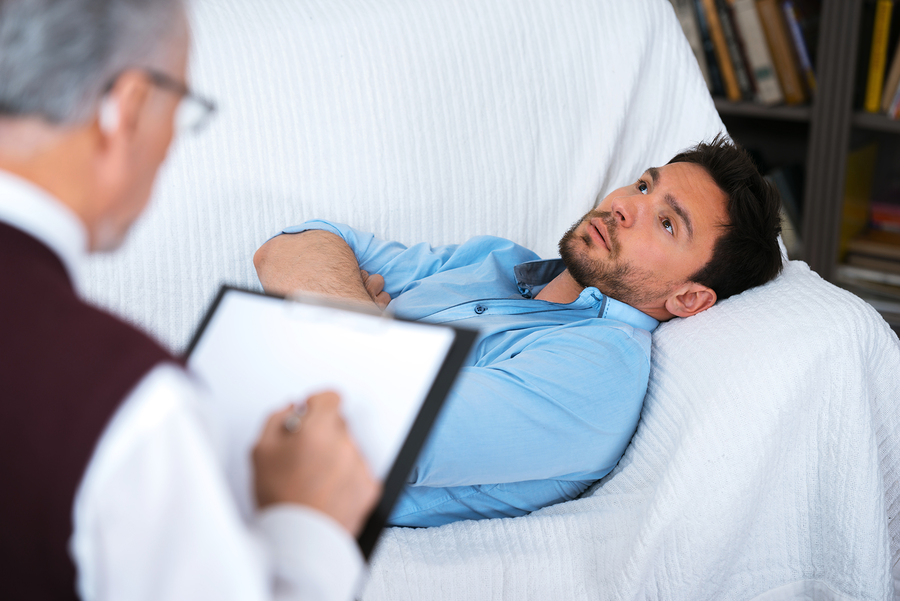Introduction: What Is Mental Illness?
“Mental illness” is one of those terms that is incredibly misunderstood. Many people, when they hear the term, associate it with some sort of madness. This is not just a matter of language, either. Until fairly recently, all mental illness was seen as some sort of madness. It was inexplicable, terrifying, and nothing could be done about it. Alternatively, the superstitious saw it as the work of magical or demonic forces, and rituals were performed to remove them.
These beliefs are still prevalent in some cultures. Even in more mainstream quarters, there is still a major stigma attached to mental illness. It is seen as a failing on the part of the afflicted, rather than an illness. Unfortunately, this is as helpful as blaming a person with bad knees for just being weak.
So, what is mental illness? The American Psychiatric Association provides the following definition:
Mental illnesses are health conditions involving changes in thinking, emotion or behavior (or a combination of these). Mental illnesses are associated with distress and/or problems functioning in social, work or family activities.
The salient points are:
- mental illnesses are health conditions and not moral failings
- they are characterised by distorted thinking, emotional, or behavioral patterns
- they negatively affect normal functioning
An important point to add is that, while mental illnesses are distinct in that they are illnesses of the mind, they often have physical causes. The mind and body are inextricably linked. Even emotions have a very clear physical presence – if you check in with your body when you are sad, for example, you’ll recognize certain sensations that are present every time you feel this way.
For this reason, treatment of mental illness requires a combined focus on both the body and the mind. Medication may well be necessary, but that does not preclude the need for therapy, and vice versa.
In discussing the following mental illnesses, we will emphasize both the physical and mental definitions, symptoms, and treatments.
What is a disorder?
One more thing to clarify before continuing is what constitutes a disorder. One may go through a period of raised anxiety, for example, without having an anxiety disorder. When can we diagnose it as a disorder?
Before something is considered a disorder, it must fit the following criteria:
- it is hindering normal functioning in some sense
- there is no obvious external cause for the level of distress
- the symptoms have persisted for a length of time (usually two weeks or more)
To continue with the example of anxiety, if someone is feeling persistent anxiety but is able to go about their everyday life without hindrance, they probably do not have an anxiety disorder. In the same sense, someone who has a family member in danger (or another significant external stressor) is expected to feel anxiety, even for a period of time that exceeds two weeks.
Now that we have a definition of mental illness or disorder, we can discuss the different illnesses with more clarity.
Gooden Center in Pasadena offers mental health treatment that combines the treatment methods mentioned below to offer patients a holistic treatment regimen. Both inpatient and outpatient treatment are available, depending on the specific needs of each individual.
Depression
Definition: What is depression?
According to the National Institute for Mental Health (NIMH), major or clinical depression is defined as:
a common but serious mood disorder. It causes severe symptoms that affect how you feel, think, and handle daily activities, such as sleeping, eating, or working. To be diagnosed with depression, the symptoms must be present for at least two weeks
For those who have not suffered from depression, it is difficult to understand how it can be a “serious mood disorder.” This is because English speakers often use the term “depression” as a synonym for “sadness.” In reality, although sadness can be one of the symptoms of depression, the two could not be more different.
More often than not, depressed people struggle to even feel sadness in the way they would when not depressed. It is characterized more by a low mood, an inability to feel interest or pleasure in anything, numbness, negative thoughts, and a difficult to describe psychological pain.
Depression, like most mental illnesses, is caused by a combination of physical and psychological factors.
Physically, people suffering with depression may have a chemical imbalance. They are not getting a normal amount of serotonin, dopamine, or other chemicals that regulate mood.
Psychologically, people suffering with depression may have distorted thought patterns, difficulty regulating emotions, and patterns of self-defeating behaviors.
Unfortunately, millions of people suffering from depression do not seek treatment because they think they should just be able to “get over it.” But, if they have a chemical imbalance or do not have the psychological resources to regulate feelings, this is impossible.
Symptoms
According to the NIMH, symptoms of depression include:
- Persistent sad, anxious, or “empty” mood
- Feelings of hopelessness, or pessimism
- Irritability
- Feelings of guilt, worthlessness, or helplessness
- Loss of interest or pleasure in hobbies and activities
- Decreased energy or fatigue
- Moving or talking more slowly
- Feeling restless or having trouble sitting still
- Difficulty concentrating, remembering, or making decisions
- Difficulty sleeping, early-morning awakening, or oversleeping
- Appetite and/or weight changes
- Thoughts of death or suicide, or suicide attempts
- Aches or pains, headaches, cramps, or digestive problems without a clear physical cause and/or that do not ease even with treatment
Not everyone suffering from depression experiences all of the symptoms. But, if some of the above persist for two weeks, you should seek a diagnosis from a mental health professional.
Types of treatment
In order to treat depression effectively, a holistic approach is necessary. Different combinations work for different people. However, the appropriate treatment regimen will include some or all of the following:
Medication
Antidepressants may be prescribed to address the chemical imbalance. These may be used in the short term, until psychological resources become sufficient, or in the long term for those who suffer from a chronic chemical imbalance.
Antidepressants work in different ways. Some use strategies to increase levels of serotonin in the body, while others aim to increase levels of dopamine. Only a qualified psychiatrist has the knowledge and skills to prescribe antidepressants responsibly, and self-diagnosis or self-medication is not an option.
Therapy
Even when the depression was mainly caused by physical factors, some sort of therapy is probably necessary. This is because while depressed, one’s thought patterns and emotions become distorted. Agonizing existential questions may arise. When the chemical imbalance is resolved, the cognitive distortions may well remain, and feelings made prominent by the depression can persist.
Various types of therapy help treat depression. These include:
- Talk therapy (or counselling). Therapists are trained in multiple approaches and may use one or many of them in treating depression. These may include CBT, which addresses cognitive distortions, psychodynamic therapy, which addresses causes of thought patterns originating in childhood, interpersonal therapy, which focuses on effective relationships, and more.
- Mindfulness and meditation. The benefits of mindfulness and meditation for treatment of depression have recently been brought to light. These techniques help someone with depression to recognize cognitive distortions and feelings, as well as to calm the mind and regulate those feelings.
- DBT and ACT. We will discuss these programs in more depth below. They combine mindfulness and other therapeutic techniques to address the illness holistically.
Anxiety

Anxiety disorders are another kind of mental illness that is misunderstood. Even people who suffer from an anxiety disorder often see it as a kind of weakness, rather than an affliction.
Definition: What is an anxiety disorder?
Everyone feels some level of anxiety that is associated to factors that may be perceived as stressful or frightening. However, someone with an anxiety disorder feels it persistently even when there is no immediate stressor.
There are different types of anxiety disorders. The most common are:
- General Anxiety Disorder (GAD)
- Social Anxiety Disorder (SAD)
Essentially, the symptoms of GAD and SAD are not all that different. However, while GAD will be present in many different contexts, SAD is particularly poignant in social situations. Someone with SAD may well feel anxiety in other types of situations, but not as strongly or persistently as in a social context.
There are other types of anxiety disorders, including obsessive compulsive disorder (OCD) and post-traumatic stress disorder (PTSD).
Symptoms
The symptoms of GAD are as follows:
- Restlessness or feeling wound-up or on edge
- Being easily fatigued
- Difficulty concentrating or having your mind go blank
- Irritability
- Muscle tension
- Difficulty controlling the worry
- Sleep problems (difficulty falling or staying asleep or restless, unsatisfying sleep)
The symptoms of SAD are as follows:
- Feeling highly anxious about being with other people and having a hard time talking to them
- Feeling very self-conscious in front of other people and worried about feeling humiliated, embarrassed, or rejected, or fearful of offending others
- Being very afraid that other people will judge them
- Worrying for days or weeks before an event where other people will be
- Staying away from places where there are other people
- Having a hard time making friends and keeping friends
- Blushing, sweating, or trembling around other people
- Feeling nauseous or sick to your stomach when other people are around
Everyone feels some of the above symptoms some of the time. However, someone with an anxiety disorder will experience them persistently for two weeks or more, and will find it hard to function optimally because of them.
Types of treatment
The most effective treatments for anxiety are generally therapeutic. However, medication for anxiety, that relieves some of the symptoms, can help reduce the anxiety. Most people suffering from anxiety disorders will need therapeutic treatment, even if the medication does help.
Therapy
- Cognitive behavioral therapy (CBT)
Cognitive behavioral therapy (CBT) is probably the most popular treatment for anxiety available today. CBT works by challenging distorted thoughts. Since thinking patterns are a major factor in the etiology of anxiety disorders, adapting these patterns can significantly reduce anxiety.
Aside from challenging the thoughts, CBT also uses exposure therapy. This refers to helping the patient gradually confront the underlying fears in a safe environment.
- Talk therapy
Talk therapy or psychotherapy is also effective at treating anxiety for some people. It works by giving one the opportunity to talk through the fears, explore their roots, and confront the anxiety as one feels it. This is a less direct treatment than CBT, but some prefer it, as it addresses aspects of the person’s life that are not only causing anxiety but holding them back in other ways as well.
- Mindfulness
As with depression, mindfulness is effective for many as a treatment for anxiety. Mindfulness and meditation techniques help the person calm their minds, think more objectively, and learn to be okay with their feelings.
DBT and ACT, which we will discuss in more detail further on, both combine mindfulness and other therapeutic techniques.
Bipolar Disorder

Definition
Otherwise known as manic-depression, bipolar disorder is characterized by two very different states: depression and mania. Depressive episodes strongly resemble unipolar depression. Manic episodes involve periods of high energy, reduced need for sleep, and loss of touch with reality.
It is important to note that bipolar disorder is very different to mood swings. Someone with bipolar disorder will experience extended periods (3 to 12 months, if untreated) of one state at a time.
There are two main types of bipolar:
- bipolar I: characterized by periods of severe mania and severe depression
- bipolar II: characterized by milder periods of hypomania and severe depression
Symptoms:
Symptoms of a manic episode include:
- Feeling “high” or elated
- Very high energy levels
- Increased activity levels
- Feeling “jumpy” or “wired”
- Insomnia and restlessness
- Talking really fast, jumping between topics
- Agitation, irritability, and “touchiness”
- Thoughts going “too fast”
- Belief that one can do a lot of things at once
- Recklessness, such as spending a lot of money or having frequent unprotected sex
The symptoms of depressive episodes in bipolar disorders are the same as regular symptoms of depression.
Types of treatment
Bipolar is a primarily neurological disorder, meaning that treatment has to first focus on medical interventions. However, because of the confusion that bipolar disorder causes, along with the need to manage the illness, therapy is generally necessary as well.
Medication
Along with antidepressants, people with bipolar are usually prescribed “mood stabilizers.” There are many different options in the gamut that psychiatrists may prescribe, and it may take a while before finding the right combination. Psychiatrists will take into account side effects, each individual’s own needs, and what shows results.
Therapy
As with depression and anxiety, multiple forms of therapy may help someone suffering from a form of bipolar disorder. Therapy is focused on helping the patient understand their illness and learn to manage it. They will explore the different triggers that can lead to an episode, what they can expect during an episode, and how best to regulate feelings during an episode. This way, they can live with the illness without it controlling them.
As with other mental illnesses, a wide range of therapeutic strategies are used to treat bipolar disorder. CBT can help the patient challenge any cognitive distortions brought about by the illness. DBT and ACT can teach the patient to regulate emotions before they reach their highest severity.
Self Harm
Definition
For anyone who has never self harmed, it can be mystifying. Many misunderstand self harm as a suicide attempt that either failed or was meant only as a call for help. While it can be a call for help, there are many other reasons people self harm, and it is not usually connected to suicide.
Self harm is used for many different reasons:
- As a way to externalize pain, taking the focus away from the mental anguish. Physical pain can seem more manageable.
- The body releases endorphins to deal with the physical pain, thereby creating a sense of euphoria that can those who self harm use as a type of self-medication.
- People suffering seuxal abuse sometimes self harm as a way of controlling some of the pain they are experiencing.
- Those who feel worthless or undeserving of love may self harm as a form of punishment.
- As an indirect call for help to those around them.
Types of self harm
The most common type of self harm is cutting, using razor blades, scissors, or knives. These cuts, usually along the arms or legs, can do real harm and require immediate medical attention. But many cutters find the balance between cuts that scar and cuts that necessitate a trip to the emergency room.
Other means of self harm include burns with lighters or cigarettes, hair pulling (trichotillomania), head banging (against a wall, etc.), hitting with a heavy object, and biting.
People who engage in self harm often try to cover up the wounds by wearing long sleeves or pants.
Behaviors such as binge eating or starving oneself can also be considered forms of self harm and may have similar roots. They may become compulsive to the point that they are disorders in and of themselves, e.g. bulimia and anorexia nervosa.
Treatment
Since self harm is often part of other mental disorders, such as depression, anxiety, bipolar, and borderline personality disorder, it may be treated along with the other symptoms of the illness.
Treatment usually entails learning to recognize one’s triggers, along with finding alternative, healthy methods to manage the emotional pain.
Borderline Personality Disorder (BPD)

The term “borderline personality disorder (BPD)” can be confusing, as it heavily implies that it is not its own disorder. It sounds as if it is referring to someone on the borderline of a diagnosis, who does not have enough symptoms to be diagnosed. In fact, that’s why the term “borderline” was first used, as the disorder was largely misunderstood. However, we know far more about it today, and it is certainly a distinct disorder, with very specific symptoms and characteristics.
Definition: What is borderline personality disorder (BPD)?
Before we can properly understand what BPD is, we must first note the difference between a personality disorder like BPD and a mood disorder like depression or bipolar.
According to Elements Behavioral Health:
In most cases the primary difference between the two types of conditions is that personality disorders are typically more ever-present. Somebody with a personality disorder is likely to have significant problems interacting with others because he or she is fundamentally different from most people, whereas with a mood disorder, a period of intense happiness or sadness is the only real departure from the norm.
With this in mind, we can begin to understand the nature of BPD. BPD is characterized by the person lacking a sense of self, leading to feelings of emptiness and abandonment. Because of this, they come to believe that people do not actually want to be around them. They tend to push and test their relationships, often precipitating the abandonment which they fear, creating a self-fulfilling prophecy.
With this in mind, the pattern among the symptoms of BPD is more clear. Self harm and failed suicide attempts are common, as a call for help to see if anyone cares. It can also be a means of self punishment for their perceived worthlessness. Emptiness follows as a result of not having a clear idea of who they are.
Furthermore, mood swings occur due to uncertainty of who they are and what their values are. These mood swings are very different to bipolar disorder, as mentioned above, since they last short periods of times, as opposed to the months of depression or mania characteristic of bipolar.
However, people with BPD often have a mood disorder as well, and they can overlap.
Symptoms
- Frantic efforts to avoid real or imagined abandonment
- A pattern of intense and unstable relationships with family, friends, and loved ones, often swinging from extreme closeness and love (idealization) to extreme dislike or anger (devaluation)
- Distorted and unstable self-image or sense of self
- Impulsive and often dangerous behaviors, such as spending sprees, unsafe sex, substance abuse, reckless driving, and binge eating
- Recurring suicidal behaviors or threats or self-harming behavior, such as cutting
- Intense and highly changeable moods, with each episode lasting from a few hours to a few days
- Chronic feelings of emptiness
- Inappropriate, intense anger or problems controlling anger
- Having stress-related paranoid thoughts
- Having severe dissociative symptoms, such as feeling cut off from oneself, observing oneself from outside the body, or losing touch with reality
Types of treatment
Borderline personality disorder has historically been very difficult to treat. However, recent advances have produced some very effective treatments that can help people with BPD learn to manage their emotions, create stable relationships, and live a normal, happy life.
Medication
There is no medication that specifically treats BPD, and it is generally used to supplement therapeutic treatment. Antidepressants and antipsychotics may be used to minimize the depression or aggression. If the person has a mood disorder, that will need to be treated for therapeutic treatment to be successful.
Therapy
Psychotherapy is generally used to treat BPD. This often involves CBT methods that help patients deal with distorted thoughts that affect self-image and relationships.
Dialectical behavioral therapy (DBT), which includes CBT methods as well as Eastern mindfulness, was created with BPD in mind, and has been proven successful. We will discuss it in more detail below.
Dissociative Disorders

Definition: What are dissociative disorders?
Dissociation refers to separation or detachment from the self. The APA defines dissociative disorders as:
[involving] problems with memory, identity, emotion, perception, behavior and sense of self. Dissociative symptoms can potentially disrupt every area of mental functioning.
The most well-known type of dissociative disorder is dissociative identity disorder (DID). This is what was formerly known as multiple identity disorder, and which is often misrepresented on television. “Multiple personalities” serve as a very good plot twist, but depictions are rarely accurate or realistic.
DID is characterized by two or more distinct identities and personalities which are present in the same individual and have power over their behavior. The affected person’s memory will fluctuate depending on which identity they are associating with.
Symptoms
The symptoms of DID include:
- Significant memory loss of specific times, people and events
- Out-of-body experiences, such as feeling as though you are watching a movie of yourself
- Mental health problems such as depression, anxiety and thoughts of suicide
- A sense of detachment from your emotions, or emotional numbness
- A lack of a sense of self-identity
The following are also common:
- Mood swings
- Suicidal tendencies
- Sleep disorders (insomnia, night terrors, and sleepwalking)
- Anxiety, panic attacks, and phobias (flashbacks, reactions to stimuli or “triggers”)
- Alcohol and drug abuse
- Compulsions and rituals
- Psychotic-like symptoms (including auditory and visual hallucinations)
- Eating disorders
Types of treatment
Treatment of dissociative disorders focuses on either reintegrating the person’s personalities into a coherent whole, or helping the person learn to control his or her identities. Primary treatment is therefore therapeutic rather than medicinal. However, antidepressants and other medications may be used to treat some of the symptoms.
Therapy
Therapy for dissociative disorders is usually a long term process. Some therapists approach it with the goal of reintegrating the patient’s alternating personalities into a coherent whole. SOme patients may not be comfortable with this, and would rather learn to find a peaceful way of “coexisting.”
Therapy also focuses on helping the patient learn to regulate his or her emotions so that s/he does not need to dissociate.
Inpatient Treatment
Inpatient treatment may be necessary in order to comprehensively treat a mental illness. It is a period of time that is dedicated to focusing exclusively on one’s mental well being. Many people feel tentative about taking this time. They may feel guilty for passing on certain duties, whether to family or colleagues. They may also feel that they’re missing out on a chunk of their lives. However, those who make the decision to allow themselves that time do not regret it. They come back to their everyday lives with renewed purpose and vigor. They have the well being they need to fulfill their duties to others and build stronger relationships. They recognize that the time they “missed” while pursuing treatment was well worth it, considering that it has vastly improved the quality of the following days, months, and years.
Inpatient treatment may be recommended to people suffering from any of the above mental illnesses. Certain illnesses are more likely to necessitate inpatient treatment. Borderline personality disorder, dissociative disorders, and bipolar disorder often require holistic, comprehensive treatment that can only be achieved in an inpatient program.
While those suffering from depression and anxiety might feel capable of getting treatment without entering an inpatient program, inpatient treatment increases the likelihood for them to learn to reach their potential, free of the shackles their illness places on them.
They also get to meet others who have gone through similar experiences, and with whom they can be vulnerable and open.
The inpatient program at Gooden Center has Dialectical Behavioral Therapy (DBT) and Acceptance and Commitment Therapy (ACT) at its core.
Dialectical Behavioral Therapy
Dialectical behavioral therapy (DBT) is an effective treatment for multiple mental illnesses. It was originally designed to treat borderline personality disorder, and is one of the few therapies proven effective at treating that illness.
DBT is, at its core, a mindfulness based program. It works according to mindfulness principles that promote a non-judgmental experience of emotions. Rather than attempting to distract or push away painful emotions, the mindfulness principles at the heart of DBT instruct patients to experience those emotions in the present. This allows the patient to view the emotions without the associated judgment, helping them recognize that not only is the emotion bearable, but if they do not try to escape the emotion, it will ebb and flow, and eventually move on. Since they’re experiencing it in the present, the common fear that the emotion will never end is muted.
The reason DBT is much more effective at treating mental illness than mindfulness on its own is that it has another component. Cognitive behavioral therapy (CBT) techniques, as well as other practical practices are taught both to help the patient implement mindfulness principles and have an alternative when mindfulness is too difficult or not enough on its own.
DBT is effective at treating most mental illnesses, because at their core, dysfunction often comes about from not knowing how to manage emotions. By learning to regulate emotions, the unhealthy defence mechanisms are no longer needed and don’t lead to problems.
Acceptance and Commitment Therapy

The main goal of ACT is to help the patient to stay aware of their private memories, thoughts, and feelings without the need to change or avoid them. In this way, it is similar to DBT. Mindfulness methods and principles are at its core.
Patients are taught to separate themselves from their thoughts and feelings. Not to dissociate, but to own their thoughts and feelings without basing their identity on them. ACT helps patients “connect with a transcendent, compassionate sense of self that is bigger than our constructed identity or self-made concepts (Romanoff, 2012).”
There is an overlap between DBT and ACT, with each using grounded, practical techniques in conjunction with mindfulness principles.
Both require a holistic treatment that asks the patient to practice skills between sessions.
Inpatient Activities
The Gooden Center inpatient program offers the following activities that help patients develop a balanced, healthy lifestyle:
- Self-Advocacy: Learning to care for yourself means understanding how to communicate more assertively and utilize community resources to your advantage.
- Life Skills: It is important to handle daily tasks such as cooking, cleaning, and managing your budget with minimal stress.
- Eco-Therapy: Planting and caring for a garden is not only therapeutic it also helps to develop useful skills.
- Vocational Skills: If you are focusing on a new career we can provide training and guidance for creating resumes, cover letters and practicing interview skills.
- Wellness Recovery Action Plan (WRAP): Patients will attend group meetings where they will take note of what is working in their recovery. This will help you create a personal plan for how to maintain mental health in the future through lists of strategies and resources.
- Community resources: Support groups within the local community can be a great way to supplement and continue treatment.
- Exercise Programs: Physical fitness can help regulate mood and connect patients through fun activities such as hikes, yoga or walks.
Outpatient treatment
Not everyone suffering from mental illness feels the need or has the ability to take time in an inpatient program. Gooden Center offers outpatient treatment for these patients.
Outpatient treatment will include aspects of inpatient treatment without the intensity of it being one’s entire focus.
Outpatient treatment may include psychiatry, one-on-one therapy, part-time DBT and ACT programs, support groups, vocational training, and more.
Gooden Center’s programs are all founded on evidence-based therapies and treatments. If you or a loved one may be suffering from a mental illness, do not delay in seeking professional help. A diagnosis is the first step towards recovery.
